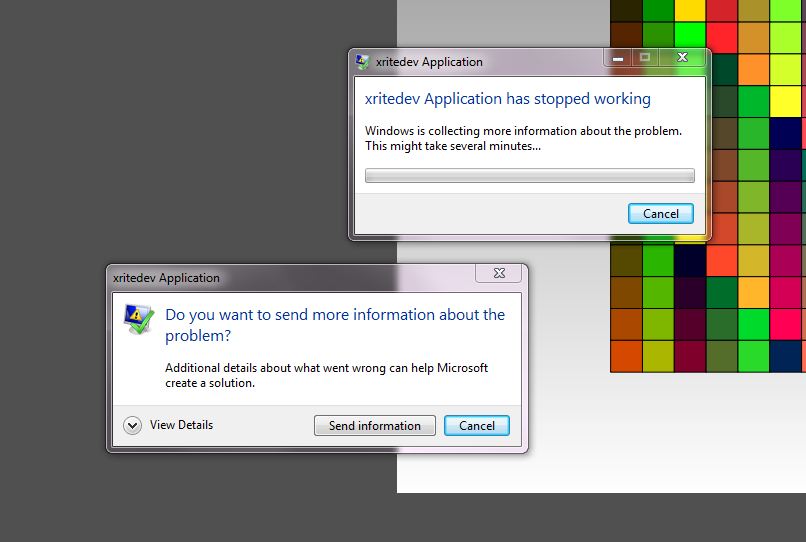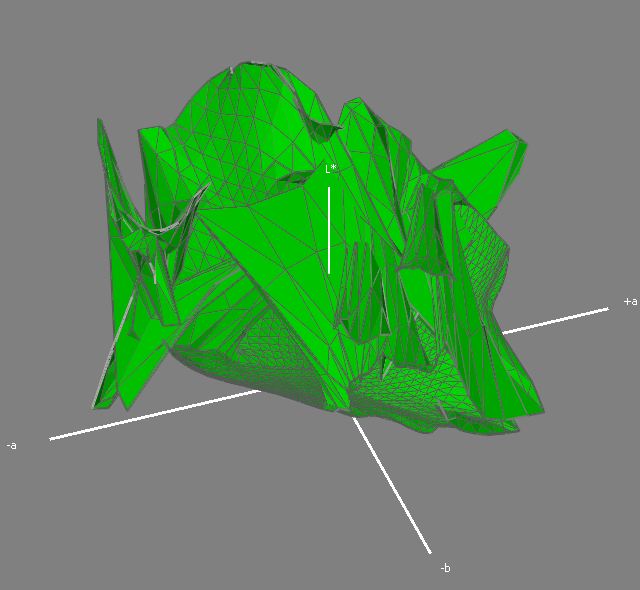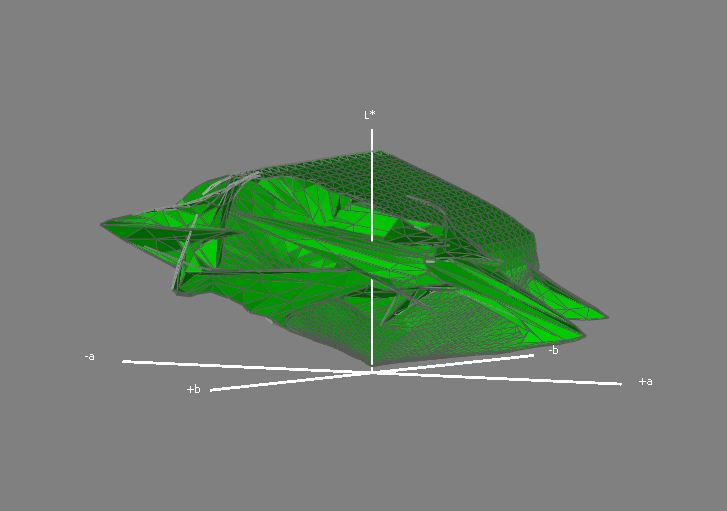Still no word from X-Rite, but Erica at Rods and Cones passed along an e-mail message from someone who does technical support for the X-Rite distributer that she works with. He said that, as I suspected, that message means that the measurement data set is bad. He suggested that I reprint and re-measure. I did that, using the basic mode instead of the advanced mode, which prints out the image in portrait rather than landscape mode, with fewer patches to scan in each sweep. For some reason, the profiling program started to give me audio feedback, which helped a lot.
About halfway through, I saw this:
I restarted I1 Publisher, and persevered. I have good news and bad news. The good news: this time it did build a profile. The bad news: the profile is really screwy. Here’s the gamut, as displayed by I1 Publisher:
Here’s another look at it, which shows that it’s not even convex.
I think I’ve established my incompetency in using the I1 Pro manually. It may be foolish, but I’m going to double down and get the XY table.
More to come.



Leave a Reply